From Hitlers Germany to Saddams Iraq
From Hitlers Germany to Saddams Iraq
The Enduring False Promise of Preventive War
Scott A. Silverstone
ROWMAN & LITTLEFIELD
Lanham Boulder New York London
Published by Rowman & Littlefield
An imprint of The Rowman & Littlefield Publishing Group, Inc.
4501 Forbes Boulevard, Suite 200, Lanham, Maryland 20706
www.rowman.com
6 Tinworth Street, London SE11 5AL, United Kingdom
Copyright 2019 by The Rowman & Littlefield Publishing Group, Inc.
Maps reproduced with permission. Chapter 1 map from American Geographical Society of New York, from Geographical Review (May 1919); chapter 6 map from Foreign Affairs 5, no. 4 (July 1927), 682.
All rights reserved . No part of this book may be reproduced in any form or by any electronic or mechanical means, including information storage and retrieval systems, without written permission from the publisher, except by a reviewer who may quote passages in a review.
British Library Cataloguing in Publication Information Available
Library of Congress Cataloging-in-Publication Data
Names: Silverstone, Scott A., author.
Title: From Hitlers Germany to Saddams Iraq : the enduring false promise of preventive war / Scott A. Silverstone.
Other titles: Enduring false promise of preventive war
Description: Lanham, MD : Rowman & Littlefield, [2019] | Includes bibliographical references and index.
Identifiers: LCCN 2018023182 (print) | LCCN 2018026514 (ebook) | ISBN 9781442274464 (ebook) | ISBN 9781442274457 (cloth : alk. paper)
Subjects: LCSH: Preemptive attack (Military science)Case studies. | International relationsCase studies. | World War, 19391945Causes. | Rhineland (Germany)Strategic aspects. | World War, 19391945Diplomatic history. | International securityCase studies.
Classification: LCC U163 (ebook) | LCC U163 .S545 2018 (print) | DDC 355.02dc23
LC record available at https://lccn.loc.gov/2018023182
 The paper used in this publication meets the minimum requirements of American National Standard for Information SciencesPermanence of Paper for Printed Library Materials, ANSI/NISO Z39.48-1992.
The paper used in this publication meets the minimum requirements of American National Standard for Information SciencesPermanence of Paper for Printed Library Materials, ANSI/NISO Z39.48-1992.
Printed in the United States of America
Acknowledgments
I owe immense gratitude to friends and colleagues who supported this project in various ways. Brigadier General Tim Trainor and Brigadier General Cindy Jebb, successive deans of the Academic Board at the United States Military Academy, supported sabbatical leave that made it possible for me to complete the book. Colonel Suzanne Nielsen, head of the Department of Social Sciences at West Point, has been a great champion of this work, and Im so grateful to my colleagues in the department who picked up a heavier load in my absence.
Much of the research for this book was made possible by a fellowship with New America from 2015 to 2017. Peter Bergen, vice president of New America, has been a source of energy and insight, and I would like to thank Anne-Marie Slaughter, president and CEO of New America, for welcoming me to this fantastic community. My New America colleagues have been an amazing source of inspiration, advice, and feedback on my work. The Carnegie Corporation of New York sponsored the first year of this fellowship, and the Center on the Future of War at Arizona State University provided sponsorship in the second year.
A number of scholars that I admire greatly have been kind enough to provide feedback on various renditions of this work: Jack Levy, Norrin Ripsman, Robert Art, Daniel Rothenberg, Dale Copeland, Tim Crawford, Rosa Brooks, Peter Jackson, Jeffrey Taliaferro, Seth Johnston, Michael Lind, Talbot Imlay, and Sam Mustafamany thanks to this distinguished group. A workshop on grand strategy between the world wars, hosted by Steven Lobell at the University of Utah, provided a fertile environment for the early development of the ideas at the heart of this book. My agent, Kristina Moore at the Wylie Agency, has been a great advocate for this project.
Finally, I would like to thank my wife, Lisa Silverstone, who plowed through rough drafts of the manuscript, chapter by chapter, to give me outstanding feedback on every aspect of my writing.
This book is dedicated to my students, the cadets at the United States Military Academy at West Point. Ive been teaching at West Point since 2001, a period that has gravely tested the operational skills, the endurance, and the creativity of the Armys leaders and its soldiers. Converting battlefield victories into real strategic success is the enduring object of war, and a challenge that every generation has to confront for itself, with insight and inspiration from those who have gone before.
Scott A. Silverstone
West Point, New York
The False Promise of Lost Opportunities
Last time I saw it all coming and I cried aloud to my own fellow-countrymen and to the world, but no one paid any attention.
Winston Churchill, 1946
Life is lived forward, but only understood backwards.
Sren Kierkegaard, 1843
O n the morning of June 28, 1940, Adolf Hitler stood on the wide stone terrace above the Jardins du Trocadro in Paris, the conqueror surveying his prize. With the Eiffel Tower as a backdrop, Hitler and his companions posed casually for photographs, like common tourists enjoying one of the worlds most iconic views. They admired the gardens and the Seine River below, the Champ de Mars beyond. Just six days earlier, in the small French town of Compigne north of Paris, the Fhrer had accepted French capitulation with a show of theatrical contempt. The simple ceremony lasted a mere fifteen minutes, yet Hitler had prepared a poignant stage for this moment, ripe with historic meaning. In a clearing in the Compigne forest sat the same train car used by French general Ferdinand Foch, commander in chief of Allied Forces, for the armistice meeting of November 11, 1918. It was this ceremony, over twenty years earlier, that signaled Germanys capitulation and the end of World War I. On Hitlers orders, Fochs train car had been plucked from the Glade of the Armistice museum and moved just meters away to this precise spot, exactly where it stood in 1918. The inscription on a large stone monument in the clearing proudly declared that this was where the criminal pride of the German Empire was vanquished. But on this day, the leader of the Third Reich was in Compigne to erase Germanys earlier humiliation. As Hitler surveyed the scene, one eyewitness, the journalist William Shirer, described his face as afire with scorn, anger, hate, revenge, triumph. Minutes later, German officers escorted the French delegation to Fochs train car to sign their own surrender agreement.
This was Hitlers first visit to Paris, and it was a victory tour to be sure. He entered the city in the wake of his conquering army, but the episode had none of the bombast that traditionally marked Nazi Germanys most important moments. Hitlers small entourage traveled in a modest three-car motorcade along the deserted Champs-lyses and circled the Arc de Triomphe. They marveled at the Paris Opera House and the grandeur of the Panthon. The Fhrer brooded over Napoleon Bonapartes tomb under the dome of the chapel at Les Invalides, and he walked the grounds of the ornate Sacr-Coeur cathedral while Parisian congregants tried to ignore the sacrilege. Hitler confided to Albert Speer, his favorite architect and the most important guest on this tour: It was the dream of my life to be permitted to see Paris. I cannot say how happy I am to have that dream fulfilled today.
Despite his ebullient mood, Hitler had ruled out a show of military triumph as part of the event. His restraint may seem odd; by the summer of 1940 the Third Reich certainly had much to celebrate. It had already absorbed Austria into a Greater Germany, bullied Czechoslovakia into submission and occupation, and violently split Poland with the Soviet Union nine months before. Denmark and much of Norway were under the control of the Wehrmacht, the Third Reichs armed forces. The blitzkrieg armor attack that overpowered France began in mid-May with the rapid conquest of the Netherlands and Belgium. Along the way, the invasion forced nearly 200,000 British soldiers and 140,000 French, Belgian, Polish, and Dutch troops, trapped by advancing German forces in the French port city of Dunkirk, into a desperate flight across the English Channel to avoid capture. The German Luftwaffe was preparing a campaign to destroy the Royal Air Force Fighter Command and terrorize London with nighttime bombing to compel British acceptance of armistice or surrender. Hitler had neutralized the USSR with a nonaggression pact ten months earlier, while the United States remained aloof from the conflict with unilateral Neutrality Acts of its own. Despite everything he had accomplished along this road to Paris, on that late June morning Hitler was looking to the future. To his adjutants he declared, I am not in the mood for a victory parade. We arent at the end yet.
Next page
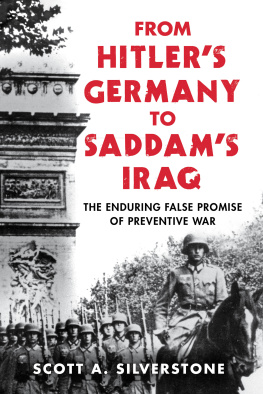

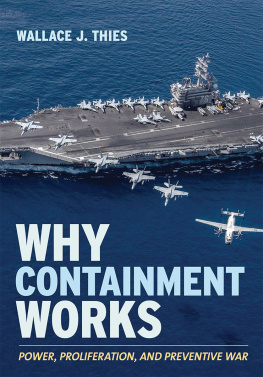
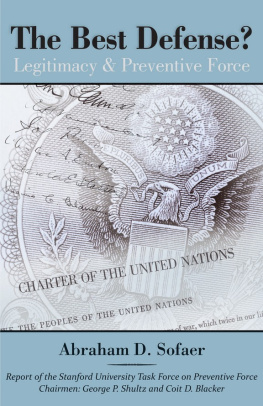
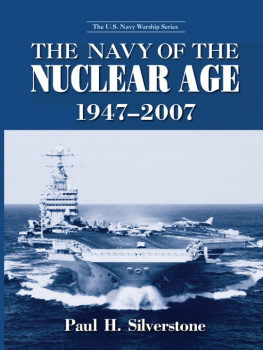
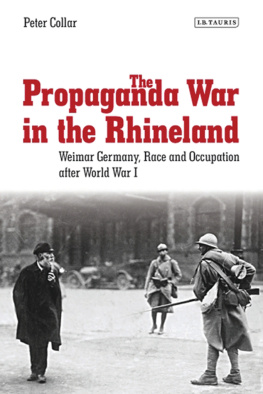

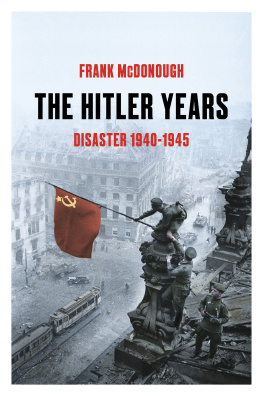

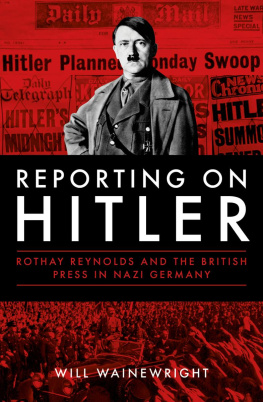

 The paper used in this publication meets the minimum requirements of American National Standard for Information SciencesPermanence of Paper for Printed Library Materials, ANSI/NISO Z39.48-1992.
The paper used in this publication meets the minimum requirements of American National Standard for Information SciencesPermanence of Paper for Printed Library Materials, ANSI/NISO Z39.48-1992.